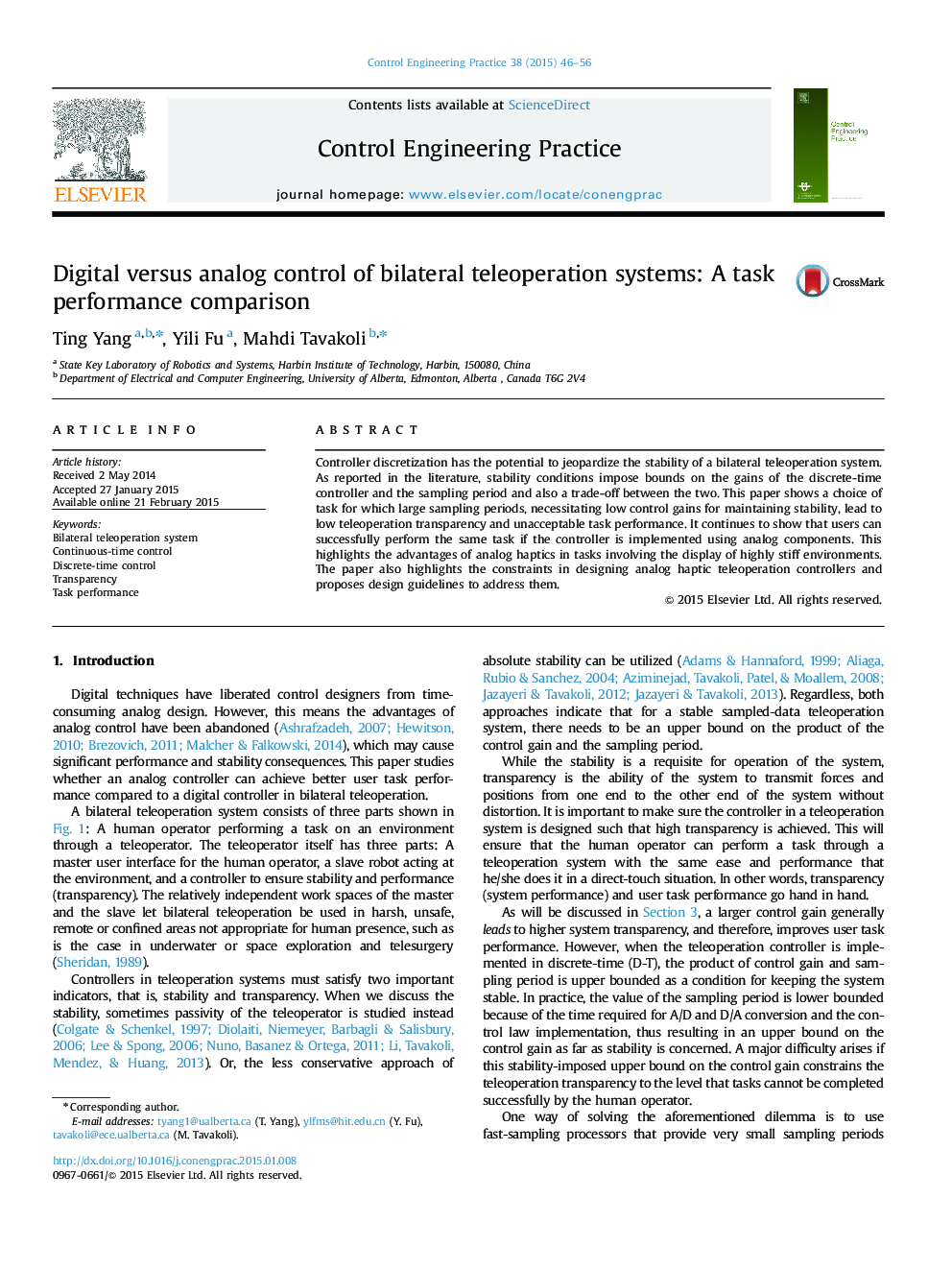| Article ID | Journal | Published Year | Pages | File Type |
|---|---|---|---|---|
| 699032 | Control Engineering Practice | 2015 | 11 Pages |
•We show that continuous-time implementation of control laws can significantly increase teleoperation transparency compared to discrete-time implementation.•We show that the cause of task failure in teleoperation can be control sampling due to the trade-off between control gain and sampling period.•A systematic design approach for continuous-time teleoperation control implementation has been proposed.•A user study shows enhanced user task performance for a specific task under continuous-time teleoperation control.
Controller discretization has the potential to jeopardize the stability of a bilateral teleoperation system. As reported in the literature, stability conditions impose bounds on the gains of the discrete-time controller and the sampling period and also a trade-off between the two. This paper shows a choice of task for which large sampling periods, necessitating low control gains for maintaining stability, lead to low teleoperation transparency and unacceptable task performance. It continues to show that users can successfully perform the same task if the controller is implemented using analog components. This highlights the advantages of analog haptics in tasks involving the display of highly stiff environments. The paper also highlights the constraints in designing analog haptic teleoperation controllers and proposes design guidelines to address them.
